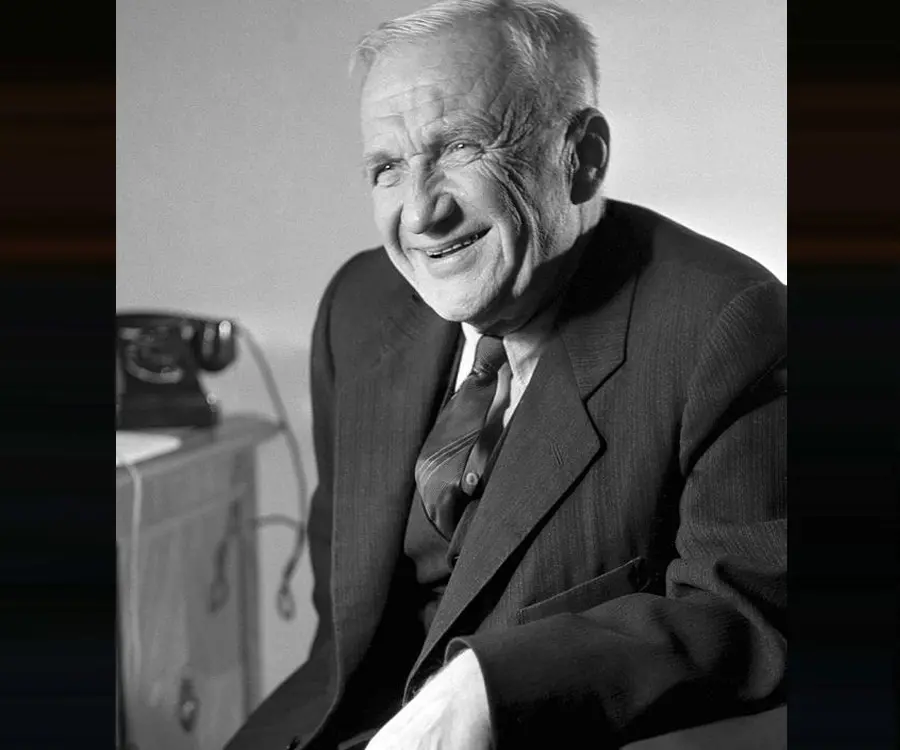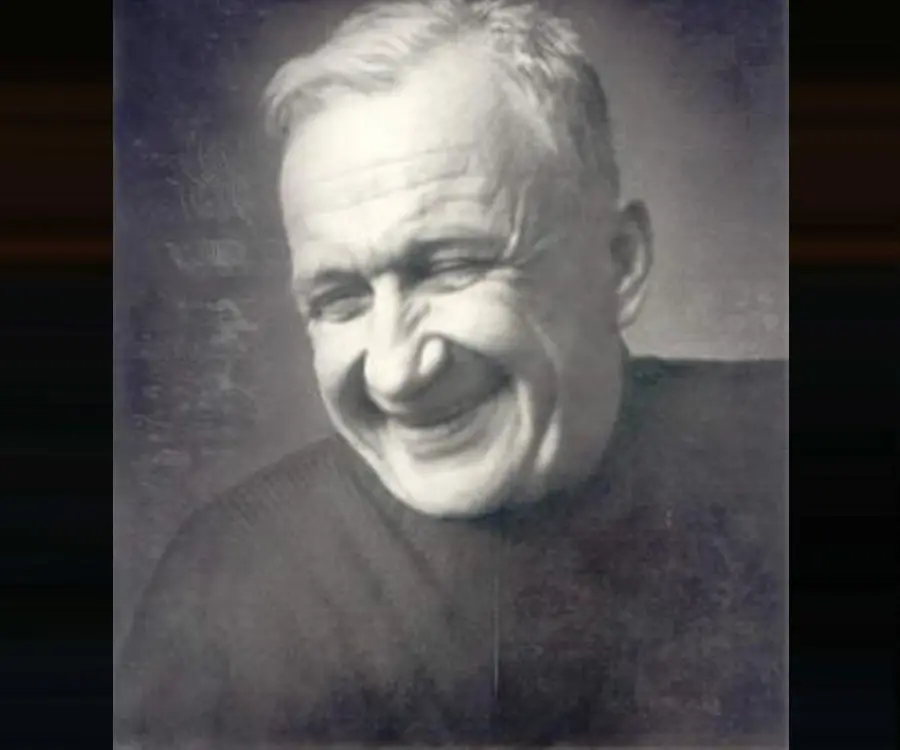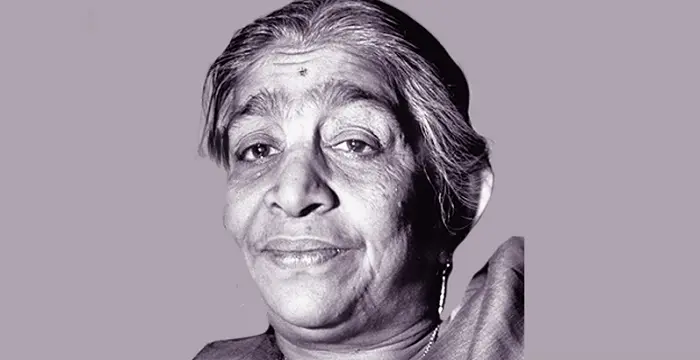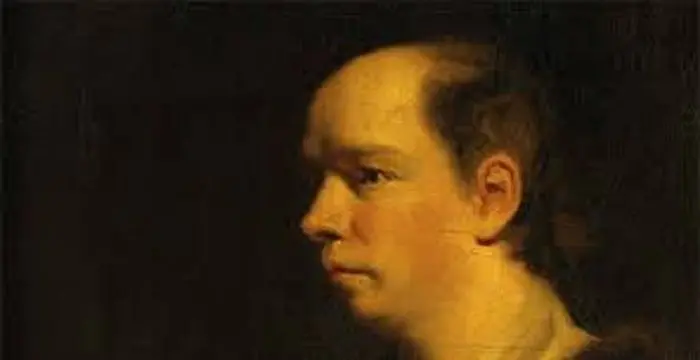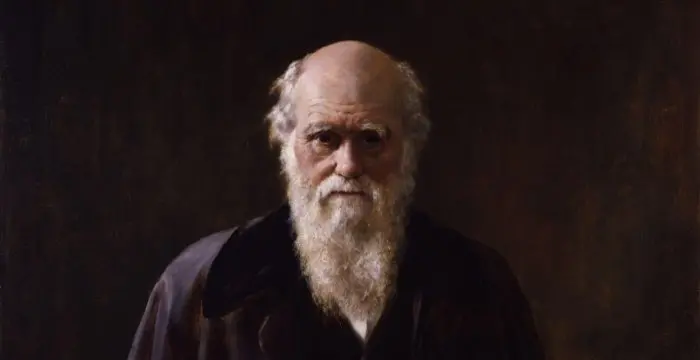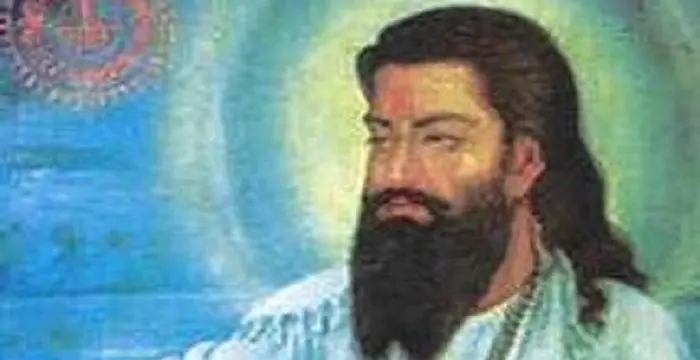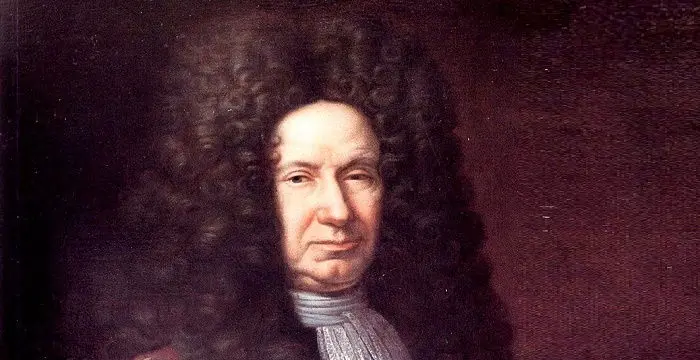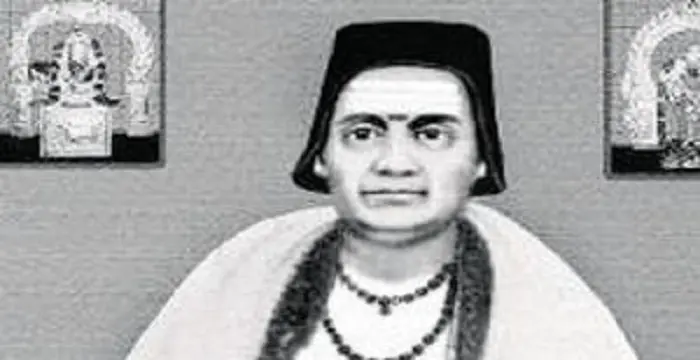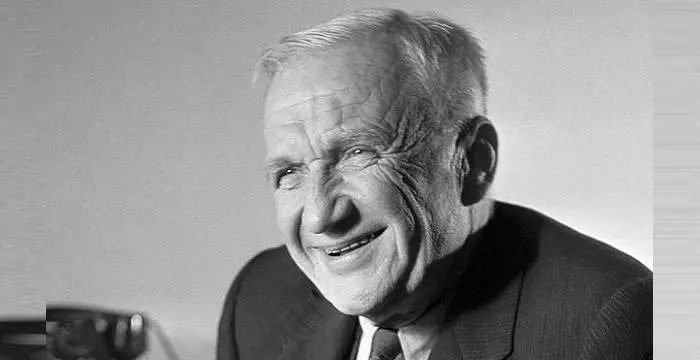
Igor Tamm - Atheists, Timeline and Family
Igor Tamm's Personal Details
Igor Yevgenyevich Tamm was a Soviet physicist and mathematician who was jointly awarded ‘Nobel Prize in Physics’ in 1958
| Information | Detail |
|---|---|
| Birthday | July 8, 1895 |
| Died on | April 12, 1971 |
| Nationality | Russian |
| Famous | Atheists, University Of Edinburgh, Scientists, Mathematicians, Physicists |
| Spouses | Nataliya Shuyskaya |
| Known as | Igor Yevgenyevich Tamm |
| Childrens | Evgeny, Irina |
| Universities |
|
| Notable Alumnis |
|
| Birth Place | Vladivostok, Russian Empire |
| Gender | Male |
| Father | Evgenij Tamm |
| Mother | Olga Davydova |
| Sun Sign | Cancer |
| Born in | Vladivostok, Russian Empire |
| Famous as | Physicist |
| Died at Age | 75 |
// Famous Physicists
Henry Cavendish
Henry Cavendish was a theoretical chemist and physicist, renowned for discovery of hydrogen and calculation of the mass of earth. To know more about his childhood, profile, timeline and career read on
Walter Kohn
Nobel Laureate Walter Kohn was an Austrian-born American theoretical chemist and physicist. Check out this biography to know about his childhood, life, achievements, works & timeline.
Nikola Tesla
Nikola Tesla was a Serbian-American inventor, best known for his development of alternating current electrical systems. This biography of Nikola Tesla provides detailed information about his childhood, life, achievements, works & timeline.
Igor Tamm's photo
Who is Igor Tamm?
Igor Yevgenyevich Tamm was a Soviet physicist and mathematician who was jointly awarded ‘Nobel Prize in Physics’ in 1958 with fellow physicists Pavel Alekseyevich Cherenkov and Ilya Frank, for elucidating along with Frank the science behind the Cherenkov radiation or the ‘Cherenkov effect’. It is a unique form of electromagnetic radiation, a phenomenon discovered by Cherenkov, which says, when charged particles like electrons travel with high velocity, faster than light, through a particular medium, a slight bluish light is emitted. Tamm was also reputed for his initial research work on specific types of electron bonding on the surfaces of crystalline solids, the concept of Tamm states. This work of Tamm was later significantly applied in the development of solid-state semiconductor devices. He held the chair of theoretical physics at the ‘Moscow State University’ following a stint as a lecturer in its physics department. He also served for decades as the head of the theoretical division of the ‘Lebedev Physical Institute’ (commonly abbreviated as ‘FIAN’), of the ‘Russian Academy of Sciences’, Moscow, one of the oldest research institutes in Russia. He also contributed towards devising the first thermonuclear bomb of the Soviet Union when he and his team from ‘FIAN’ worked under physicist Yuly Khariton’s direction on the project in a secret installation known as Arzamas-16. He was conferred the title ‘Hero of Socialist Labour’ in 1953.
// Famous University Of Edinburgh
Sarojini Naidu
Sarojini Naidu was an Indian freedom fighter and poet. Read this brief biography to find more on her life.
Oliver Goldsmith
Oliver Goldsmith was an Anglo-Irish essayist and novelist of the 18th century. Go through this biography to know in details about his life, profile, childhood and timeline.
Charles Darwin
Charles Darwin was one of the most influential figures in human history. Go through this biography to get details about his life, profile and timeline.
Childhood & Early Life
He was born on July 8, 1895, in Vladivostok, Russian Empire to Evgenij Tamm and his wife Olga Davydova. His father was an electrical engineer who worked in Yelizavetgrad (presently Kirovohrad, Ukraine), designated to build and manage water systems and electric power stations.
He attended a gymnasium in Yelizavetgrad and thereafter went to the United Kingdom where he studied at the ‘University of Edinburg’ in 1913-14 along with his school friend Boris Hessen who became philosopher, physicist and historian of science.
In 1914, at the very outset of the First World War, he offered volunteer service as a field medical person in the army.
He was a very strong willed person from a young age and was staunchly against participation of Russia in the World War I. In this pursuit he got associated with the ongoing Revolutionary movement in 1917 and remained an active campaigner against the war. Following the March Revolution that year he served the revolutionary committees. He never took up weapons, but faced incarceration several times.
In 1918 he completed his BS in physics from the ‘Moscow State University’.
Career
Tamm completed his first scientific paper in 1923, entitled ‘Electrodynamics of the Anisotropic Medium in the Special Theory of Relativity’.
He joined the ‘Moscow State University’ in 1924, as a lecturer in its physics department. He went on to hold the chair of theoretical physics at the university succeeding his mentor Leonid I. Mandelstam.
He was one of the foreign scientists who worked with famous Austrian and Dutch theoretical physicist Paul Ehrenfest for few months in 1928 in the latter’s laboratory at the ‘Leiden University’ (LEI), the oldest university in Netherlands.
He published his paper conceptualising surface states, the electronic states found at the surface of materials, in 1932, which became a significant concept for ‘MOSFET (metal–oxide–semiconductor field-effect transistor) physics. The surface states which are calculated on the basis of a tight-binding model are frequently called amm states. That year he also introduced the concept of phonon.
The Russian Academy of Sciences elected him as a corresponding member in 1933.
In 1934 he joined the ‘Lebedev Physical Institute’ (‘FIAN’) in Moscow. He became head of the theoretical department of ‘FIAN’ there and held the position till he was alive. That year he along with Semen Altshuller proposed that neutron has a magnetic moment which was contrary to the then perception that neutron, an elementary particle, has zero charge, hence cannot have a magnetic moment.
In 1934 he suggested another concept that interaction of proton and neutron can be elucidated as an exchange force transferred by a huge particle that was not yet identified. The concept was later developed by Japanese theoretical physicist Hideki Yukawa into a hypothesis of meson forces.
Cherenkov’s observation and discovery of the unique form of electromagnetic radiation, better known as ‘Cherenkov radiation’, where blue light is emitted when charged particles like electrons travel with high velocity, faster than light, through a particular medium, led Tamm and Frank elucidate the real cause of such phenomenon in 1937. Such scientific contributions led the trio win the ‘Nobel Prize in Physics’.
An approximate procedure for many-body physics was developed by Tamm in 1945, which was also independently developed by another American theoretical physicist Sidney Dancoff in 1950. The procedure came to be known as Tamm–Dancoff approximation method.
Even though he was a distinguished theoretician, Tamm was not delegated to work on the atomic bomb project following the Second World War, presumably due to political reasons.
However when physicist Igor V. Kurchatov wanted to examine feasibility of developing a thermonuclear bomb and in that pursuit required a strong group, Tamm was inducted to organise FIAN’s theoretical division in Moscow in June 1948.
Tamm’s group of physicists included Vitaly L. Ginzburg, Andrey D. Sakharov, Vladimir Y. Fainberg and Yakov B. Zeldovich among others.
Sometime during March-April 1950, he and many of his group members were sent to a secret installation ‘Arzamas-16’, where they worked on one of the thermonuclear bomb project under the supervision of physicist Yuly Khariton. He along with Vitaly L. Ginzburg and Andrei Sakharov disapproved work of other scientists and suggested the ‘Layer Cake’ design that consisted of alternating layers of thermonuclear fuel and uranium.
A tokamak system for realising Controlled thermonuclear fusion (CTF) based on toroidal magnetic thermonuclear reactor was suggested by him and Andrei Sakharov in 1951 and subsequently the INF developed the first such tool.
On August 12, 1953, the bomb with ‘Layer Cake’ design, known as ‘Sloika’ was successfully tested. Following the test he took retirement from the project and went back to Moscow to resume his work at ‘FIAN’.
In October 1953, he was elected as a full member or academician of the Russian Academy of Sciences.
He also served as Professor of ‘J. M. Sverdlov Communist University’ and ‘Crimea State Medical University’.
His notable books include ‘Relativistic Interaction of Elementary Particles’ (1935), ‘On the Magnetic Moment of the Neutron’ (1938), ‘Theory of Electronics’ (1949) and ‘Selected Papers’ (1990).
He remained foreign member of ‘American Academy of Arts and Sciences’, ‘Swedish Physical Society’ and ‘Polish Academy of Sciences’.
Awards & Achievements
He received the ‘Nobel Prize in Physics’ in 1958 jointly with Pavel Alekseyevich Cherenkov and Ilya Frank, for explaining the real cause behind the Cherenkov radiation.
Personal Life & Legacy
In September 1917 he married Nataliya Shuyskaya. The couple was blessed with two children - a daughter Irina, born in 1921 and a son, Evgeny, born in 1926. Irina was a chemist and Evgeny was a physicist also renowned as a mountain climber. In 1982 Evgeny led the Soviet Everest expedition.
Tamm was an atheist.
On April 12, 1971, he passed away in Moscow at the age of 75 years.
Trivia
The shallow lunar impact crater, situated to the west-northwest of the large and much more prominent crater called ‘Chaplygin’, is named after him as ‘Tamm’.
// Famous Scientists
Juliane Koepcke
Juliane Koepcke is a German-Peruvian biologist, who was the lone survivor among the 92 passengers and crew of the ill-fated LANSA Flight 508 that crashed in the Peruvian rainforest on 24 December 1971. Know more about her life in this biography.
Henry Cavendish
Henry Cavendish was a theoretical chemist and physicist, renowned for discovery of hydrogen and calculation of the mass of earth. To know more about his childhood, profile, timeline and career read on
Konstantin Tsiolkovsky
Konstantin Tsiolkovsky was a Russian rocket scientist and a pioneer of astronautics. This biography provides detailed information about his childhood, family, personal life, career, achievements, etc.
Igor Tamm's awards
| Year | Name | Award |
|---|---|---|
Other | ||
| 0 | 1967 Lomonosov Gold Medal | |
| 0 | 1958 Nobel Prize in Physics | |
| 0 | 1954 Order of the Hero of Socialist Labour | |
| 0 | Stalin Prize | |
Igor Tamm biography timelines
- // 8th Jul 1895He was born on July 8, 1895, in Vladivostok, Russian Empire to Evgenij Tamm and his wife Olga Davydova. His father was an electrical engineer who worked in Yelizavetgrad (presently Kirovohrad, Ukraine), designated to build and manage water systems and electric power stations.
- // 1913He attended a gymnasium in Yelizavetgrad and thereafter went to the United Kingdom where he studied at the ‘University of Edinburg’ in 1913-14 along with his school friend Boris Hessen who became philosopher, physicist and historian of science.
- // 1914In 1914, at the very outset of the First World War, he offered volunteer service as a field medical person in the army.
- // 1917He was a very strong willed person from a young age and was staunchly against participation of Russia in the World War I. In this pursuit he got associated with the ongoing Revolutionary movement in 1917 and remained an active campaigner against the war. Following the March Revolution that year he served the revolutionary committees. He never took up weapons, but faced incarceration several times.
- // 1917In September 1917 he married Nataliya Shuyskaya. The couple was blessed with two children - a daughter Irina, born in 1921 and a son, Evgeny, born in 1926. Irina was a chemist and Evgeny was a physicist also renowned as a mountain climber. In 1982 Evgeny led the Soviet Everest expedition.
- // 1918In 1918 he completed his BS in physics from the ‘Moscow State University’.
- // 1923Tamm completed his first scientific paper in 1923, entitled ‘Electrodynamics of the Anisotropic Medium in the Special Theory of Relativity’.
- // 1924He joined the ‘Moscow State University’ in 1924, as a lecturer in its physics department. He went on to hold the chair of theoretical physics at the university succeeding his mentor Leonid I. Mandelstam.
- // 1928He was one of the foreign scientists who worked with famous Austrian and Dutch theoretical physicist Paul Ehrenfest for few months in 1928 in the latter’s laboratory at the ‘Leiden University’ (LEI), the oldest university in Netherlands.
- // 1932He published his paper conceptualising surface states, the electronic states found at the surface of materials, in 1932, which became a significant concept for ‘MOSFET (metal–oxide–semiconductor field-effect transistor) physics. The surface states which are calculated on the basis of a tight-binding model are frequently called amm states. That year he also introduced the concept of phonon.
- // 1933The Russian Academy of Sciences elected him as a corresponding member in 1933.
- // 1934In 1934 he joined the ‘Lebedev Physical Institute’ (‘FIAN’) in Moscow. He became head of the theoretical department of ‘FIAN’ there and held the position till he was alive. That year he along with Semen Altshuller proposed that neutron has a magnetic moment which was contrary to the then perception that neutron, an elementary particle, has zero charge, hence cannot have a magnetic moment.
- // 1934In 1934 he suggested another concept that interaction of proton and neutron can be elucidated as an exchange force transferred by a huge particle that was not yet identified. The concept was later developed by Japanese theoretical physicist Hideki Yukawa into a hypothesis of meson forces.
- // 1937Cherenkov’s observation and discovery of the unique form of electromagnetic radiation, better known as ‘Cherenkov radiation’, where blue light is emitted when charged particles like electrons travel with high velocity, faster than light, through a particular medium, led Tamm and Frank elucidate the real cause of such phenomenon in 1937. Such scientific contributions led the trio win the ‘Nobel Prize in Physics’.
- // 1945 To 1950An approximate procedure for many-body physics was developed by Tamm in 1945, which was also independently developed by another American theoretical physicist Sidney Dancoff in 1950. The procedure came to be known as Tamm–Dancoff approximation method.
- // Jun 1948However when physicist Igor V. Kurchatov wanted to examine feasibility of developing a thermonuclear bomb and in that pursuit required a strong group, Tamm was inducted to organise FIAN’s theoretical division in Moscow in June 1948.
- // Apr 1950Sometime during March-April 1950, he and many of his group members were sent to a secret installation ‘Arzamas-16’, where they worked on one of the thermonuclear bomb project under the supervision of physicist Yuly Khariton. He along with Vitaly L. Ginzburg and Andrei Sakharov disapproved work of other scientists and suggested the ‘Layer Cake’ design that consisted of alternating layers of thermonuclear fuel and uranium.
- // 1951A tokamak system for realising Controlled thermonuclear fusion (CTF) based on toroidal magnetic thermonuclear reactor was suggested by him and Andrei Sakharov in 1951 and subsequently the INF developed the first such tool.
- // 12th Aug 1953On August 12, 1953, the bomb with ‘Layer Cake’ design, known as ‘Sloika’ was successfully tested. Following the test he took retirement from the project and went back to Moscow to resume his work at ‘FIAN’.
- // Oct 1953In October 1953, he was elected as a full member or academician of the Russian Academy of Sciences.
- // 1958He received the ‘Nobel Prize in Physics’ in 1958 jointly with Pavel Alekseyevich Cherenkov and Ilya Frank, for explaining the real cause behind the Cherenkov radiation.
- // 12th Apr 1971On April 12, 1971, he passed away in Moscow at the age of 75 years.
// Famous Mathematicians
Grigori Perelman
Grigori Perelman is a Russian mathematician who is best known for his contributions to Riemannian geometry and geometric topology. Check out this biography to know about his childhood, family life, achievements and fun facts about him.
Terence Tao
Terence Tao is an Australian- American mathematician who has contributed enormously to the field of mathematics. Check out this biography to know about his childhood, family life and achievements.
Isaac Newton
Isaac Newton was an English scientist and mathematician, who discovered gravitation and Newtonian Mechanics. Read this biography to find more on his life.
Brahmagupta
Brahmagupta was a highly accomplished ancient Indian astronomer and mathematician. This biography of Brahmagupta provides detailed information about his childhood, life, achievements, works & timeline.
Giovanni Domenico Cassini
Giovanni Cassini was a 17th century Italian mathematician, astronomer and astrologer. This biography of Giovanni Cassini provides detailed information about his childhood, life, achievements, works & timeline.
Bhāskara II
Bhaskara II was a 12th century Indian mathematician. This biography of Bhaskara II provides detailed information about his childhood, life, achievements, works & timeline.
Igor Tamm's FAQ
What is Igor Tamm birthday?
Igor Tamm was born at 1895-07-08
When was Igor Tamm died?
Igor Tamm was died at 1971-04-12
Where was Igor Tamm died?
Igor Tamm was died in Moscow, Russian SFSR, Soviet Union
Which age was Igor Tamm died?
Igor Tamm was died at age 75
Where is Igor Tamm's birth place?
Igor Tamm was born in Vladivostok, Russian Empire
What is Igor Tamm nationalities?
Igor Tamm's nationalities is Russian
Who is Igor Tamm spouses?
Igor Tamm's spouses is Nataliya Shuyskaya
Who is Igor Tamm childrens?
Igor Tamm's childrens is Evgeny, Irina
What was Igor Tamm universities?
Igor Tamm studied at University Of Edinburgh, Moscow State University, Edinburgh University
What was Igor Tamm notable alumnis?
Igor Tamm's notable alumnis is University Of Edinburgh
Who is Igor Tamm's father?
Igor Tamm's father is Evgenij Tamm
Who is Igor Tamm's mother?
Igor Tamm's mother is Olga Davydova
What is Igor Tamm's sun sign?
Igor Tamm is Cancer
How famous is Igor Tamm?
Igor Tamm is famouse as Physicist



